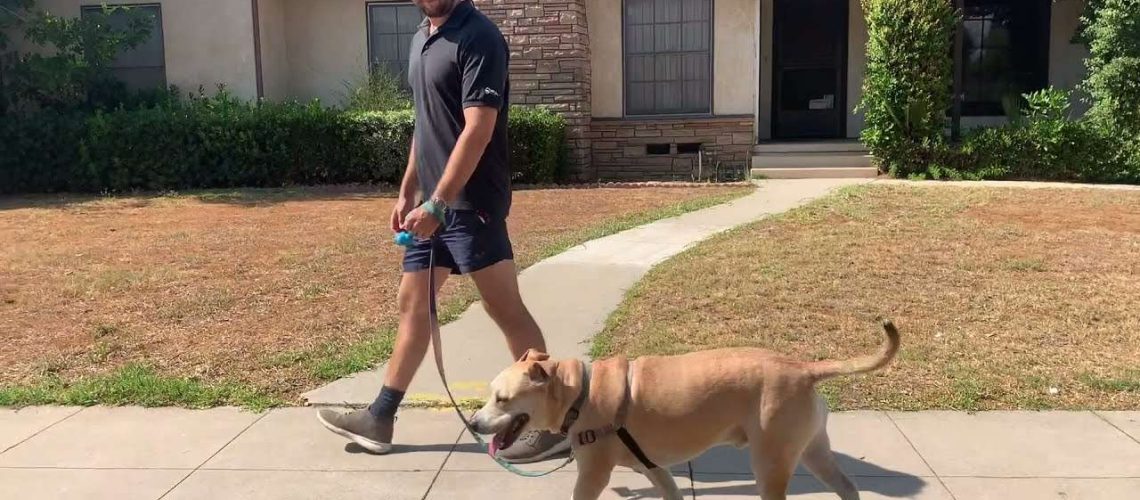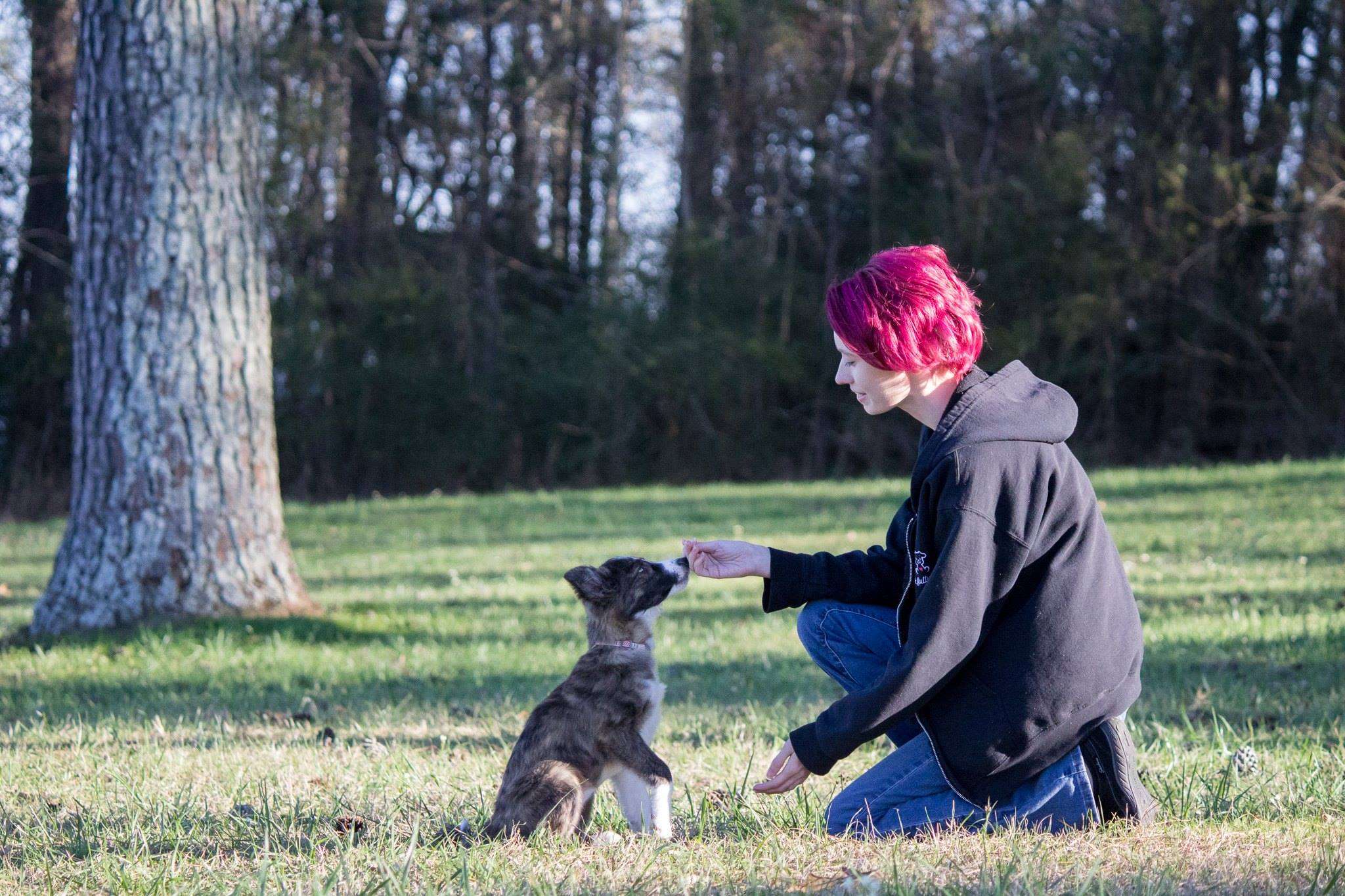Key Takeaways:
- Consistency is key: Training your dog to walk on a loose leash requires consistent reinforcement of desired behaviors.
- Start indoors: Begin training in a controlled environment with minimal distractions before progressing to outdoor walks.
- Use positive reinforcement: Reward your dog with treats, praise, or playtime when they walk calmly on a loose leash.
- Avoid pulling: Teach your dog that pulling on the leash will not be rewarded by stopping and waiting for them to calm down before continuing the walk.
- Practice patience: Training takes time and patience, so be prepared for setbacks and continue practicing regularly to achieve desired results.
Are you tired of your dog pulling you down the street like a sled dog on a mission? Do you dream of leisurely strolls where your furry companion walks calmly by your side? Well, look no further! In this article, we will uncover the secrets to training your dog to walk on a loose leash. Not only will this save your arm from being yanked out of its socket, but it will also improve the bond between you and your four-legged friend. Imagine the freedom of being able to walk anywhere with your dog without feeling like you're in a tug-of-war battle. With just a few simple techniques, you can transform those chaotic walks into enjoyable outings that both you and your pup will love. So let's dive in and discover how to make walking on a loose leash a breeze!
Why is it important for your dog to walk on a loose leash?
Walking your dog on a loose leash is important for several reasons. First, it ensures the safety of both you and your dog. When a dog pulls on the leash, it can lead to accidents or injuries if they suddenly dart off or yank you off balance. Walking on a loose leash allows you to have better control and prevents any sudden jerks or pulls.
Secondly, walking on a loose leash promotes good behavior and reinforces your role as the leader. Dogs are pack animals and instinctively follow leaders. By teaching your dog to walk calmly beside you, you establish yourself as the leader and reinforce positive behavior.
Benefits of Loose Leash Walking
- Ensures safety for both the dog and owner
- Promotes good behavior and establishes leadership
- Makes walks more enjoyable for both parties
- Allows dogs to explore their surroundings without restrictions
Building Trust and Bonding
Walking on a loose leash also helps build trust and strengthen the bond between you and your dog. When your dog learns to walk calmly by your side, they are more likely to pay attention to you and respond to commands. This creates a positive experience for both of you during walks.
Tips for Success
- Start training in a quiet area with minimal distractions.
- Reward your dog with treats or praise when they walk beside you without pulling.
- Be patient and consistent with training, as it may take time for your dog to learn.
- If your dog starts pulling, stop walking and wait for them to calm down before continuing.
Essential commands to teach your dog before starting leash training
Sit
Teaching your dog to sit is an essential command that sets the foundation for leash training. Start by holding a treat close to your dog's nose and slowly move it upwards, causing their head to follow the treat and their bottom to lower. Once they are in a sitting position, say "sit" and reward them with the treat. Repeat this process several times until they understand the command.
Stay
The "stay" command is crucial for keeping your dog calm and focused during leash training. Begin by having your dog sit, then hold up your hand as if signaling them to stop. Say "stay" in a firm but gentle tone and take a step back. If they remain in place, reward them with praise or a treat. Gradually increase the distance and duration of the stay command as your dog becomes more comfortable.
Tips:
- Use treats or rewards that are highly motivating for your dog.
- Keep training sessions short and frequent to maintain their attention.
- Practice these commands in different environments to reinforce their understanding.
Using positive reinforcement to encourage your dog to walk on a loose leash
Walking on a loose leash is much more enjoyable for both you and your furry friend. Positive reinforcement is an effective method for encouraging this behavior. Start by attaching the leash to your dog's collar or harness and hold it loosely. When they begin walking beside you without pulling, reward them with praise, treats, or both.
Consistency is key when using positive reinforcement. Reinforce good behavior every time it occurs, gradually reducing the frequency of rewards as your dog becomes more proficient at walking on a loose leash.
Tips:
- Use verbal cues such as "heel" or "walk nicely" to reinforce the desired behavior.
- Avoid yanking or pulling on the leash as it can create tension and confusion for your dog.
- Be patient and understanding, as it may take time for your dog to fully grasp walking on a loose leash.
Common mistakes people make when training their dogs to walk on a loose leash
Inconsistency
One common mistake is being inconsistent with training. Dogs thrive on routine and clear expectations. If you allow your dog to pull on the leash sometimes but not others, they will become confused about what behavior is acceptable. Consistency is crucial in reinforcing the desired behavior of walking on a loose leash.
Using punishment
Another mistake is using punishment as a means of correcting unwanted behavior. Yelling, jerking the leash, or using other aversive methods can create fear and anxiety in your dog, making them less likely to respond positively to training. Instead, focus on positive reinforcement techniques that reward good behavior.
Tips:
- Set clear rules and boundaries from the beginning and stick to them consistently.
- Use positive reinforcement techniques such as treats, praise, and playtime to reward desired behaviors.
- Seek professional help if you're struggling with training or need guidance on effective methods.
Gradually introducing distractions while training your dog to walk on a loose leash
Introducing distractions gradually during leash training helps prepare your dog for real-life situations where there may be tempting distractions. Start by practicing in a quiet environment without any distractions. Once your dog consistently walks on a loose leash in this setting, gradually increase the level of distraction.
For example, you can start by walking near mild distractions such as other calm dogs or people at a distance. Reward your dog for maintaining focus and walking calmly. As they become more comfortable, gradually decrease the distance between them and the distractions.
Tips:
- Use high-value treats or toys to keep your dog's attention during training sessions with distractions.
- Be patient and understanding if your dog gets distracted or excited. Redirect their focus back to you and continue training.
- Gradually increase the difficulty of distractions over time to ensure consistent progress.
Tools and equipment that can help with leash training and how they work
Front-clip harness
A front-clip harness is a useful tool for leash training as it helps redirect your dog's pulling behavior. This type of harness has a ring on the front of the chest, which allows you to attach the leash. When your dog pulls, the harness gently turns them towards you, discouraging pulling and promoting walking on a loose leash.
Treat pouch
A treat pouch is a handy accessory during leash training as it keeps treats easily accessible. Having treats readily available allows you to reward good behavior promptly, reinforcing the desired walking on a loose leash. Treat pouches typically attach to your waist or belt, providing convenient access without interrupting the training process.
Tips:
- Choose tools and equipment that are comfortable for both you and your dog.
- Properly fit any harness or collar to ensure it is secure but not too tight.
- Always supervise your dog when using any tools or equipment during training.
Tips for consistency and patience during the process of teaching your dog to walk on a loose leash
Consistency and patience are crucial when teaching your dog to walk on a loose leash. Here are some tips to help maintain consistency throughout the training process:
1. Set clear expectations: Clearly communicate what behavior is expected from your dog while walking on a loose leash. Use consistent verbal cues such as "heel" or "walk nicely" so they understand what is required.
2. Establish a routine: Create a regular walking schedule to establish consistency. Dogs thrive on routine, and having consistent training sessions will help reinforce the desired behavior.
3. Practice in different environments: Gradually introduce your dog to various environments during training. This helps them generalize the behavior of walking on a loose leash and ensures they can follow commands regardless of the surroundings.
4. Be patient and understanding: Remember that learning takes time, especially for dogs. Stay calm and patient throughout the training process, rewarding small successes along the way.
5. Celebrate progress: Acknowledge and celebrate even small improvements in your dog's leash-walking skills. Positive reinforcement encourages them to continue exhibiting good behavior.
Tips:
- Avoid rushing the training process as it can lead to frustration for both you and your dog.
- Take breaks if either of you becomes overwhelmed or tired during training sessions.
- Seek guidance from a professional trainer if you encounter challenges or need additional support.
In conclusion, training your dog to walk on a loose leash is possible with patience and consistency. By using positive reinforcement and practicing regularly, you can enjoy pleasant walks with your furry friend by your side.
How long does it take to teach a dog to walk on a loose leash?
Regardless of your dog's age, you can train them to walk on a leash without pulling much faster if you practice short training sessions on a regular basis. If you consistently train your dog to walk on a loose leash two to three times a day, you may start seeing results in as little as two weeks.
Can you train loose leash walking with a harness?
If you want to teach your dog to walk well-behaved on a leash, it is much easier and safer to use a body harness. Dogs that pull on their leash while wearing a collar are difficult to control and also at risk of experiencing significant health problems.
What is the best collar to train a dog to walk on a loose leash?
If you're looking for a suitable collar for training your dog to walk on a loose leash, the martingale collar is a great choice.
How do you teach loose lead?
When you notice the leash becoming tight, instruct your dog that walking beside you with a loose leash results in moving forward, while pulling results in no movement. As soon as the leash starts to tighten, cease walking. Stay stationary, remain silent, and refrain from moving forward until the leash becomes loose again.
What is the circle method of loose leash walking?
The technique called "The circle method of Loose Leash Walking" is used to improve the behavior and emotional well-being of dogs that are reactive and easily agitated. It helps them adapt to their surroundings, strengthen their bond with their owners, and feel more at ease when faced with specific triggers.
What is the pattern game for loose leash walking?
To participate in this game, allow your dog to be off-leash in the backyard and have a handful of highly appetizing treats. Begin by placing one treat on the ground and moving three steps away while audibly counting each step. Then, place another treat on the ground and take three more steps in a different direction while counting to three out loud.

















